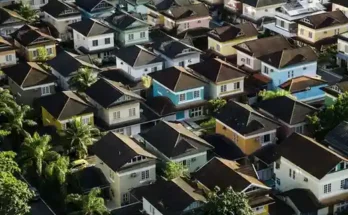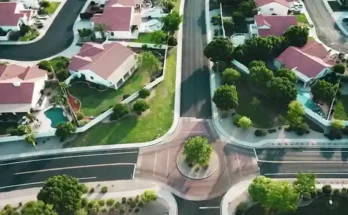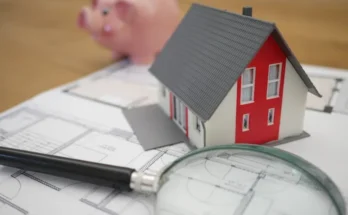The Real Estate Renaissance:
Real estate is more than just buying and selling property—it’s the architecture of our lives. Every home tells a story, every commercial space houses dreams, and every plot of land holds possibility. As we step into 2025, the real estate landscape is undergoing a transformation unlike any seen before. It’s not merely about location anymore; it’s about lifestyle, technology, sustainability, and adaptability.
From digital closings to eco-friendly developments, the real estate world is reshaping to mirror the values of a new generation. Let’s delve into the forces driving this evolution and what it means for buyers, sellers, and investors alike.
The Digital Transformation of Property Transactions:
-
From Open Houses to Online Closings
Just a decade ago, buying a home meant weekend open houses, stacks of paperwork, and face-to-face negotiations. Fast forward to today, and much of that process happens online. Virtual tours, 3D floor plans, and drone footage have become standard in listings. Platforms now allow potential buyers to explore homes in detail without leaving their living room.
But the innovation doesn’t stop there. Digital signatures, AI-powered mortgage approvals, and blockchain-backed property records are turning what was once a tedious, manual process into a streamlined, secure, and swift experience. Real estate agents now double as digital advisors, guiding clients through high-tech transactions with ease.
-
Blockchain and the Promise of Transparency
Blockchain technology isn’t just for cryptocurrencies—it’s making waves in real estate too. Imagine a world where title deeds, historical ownership, and land registry documents are stored on an incorruptible digital ledger. This not only speeds up transactions but also significantly reduces fraud.
With blockchain, there’s a new level of trust and accountability in the industry. Buyers can trace the history of a property in seconds, and sellers can ensure their assets are accurately represented. It’s the beginning of a more open and efficient market.
The Rise of Smart Homes and Sustainable Living:
-
Smart Living Spaces Take the Lead
The smart home revolution has moved far beyond voice assistants and smart thermostats. Today’s homes are learning ecosystems equipped with AI-driven security, energy-efficient appliances, and intelligent climate control. Buyers aren’t just looking for granite countertops anymore—they want homes that think, adapt, and enhance daily living.
Developers are responding to this demand by integrating IoT (Internet of Things) technologies into new builds. Entire neighborhoods are being designed with centralized smart systems that allow residents to monitor utility usage, access community amenities, and even schedule maintenance with a tap on their phone.
-
Sustainability Is No Longer Optional
The push toward eco-conscious living has shifted from niche to necessity. With climate change impacting everything from insurance costs to building materials, both developers and homeowners are prioritizing green features. Solar panels, rainwater harvesting systems, energy-efficient windows, and recycled construction materials are now must-haves.
Governments around the globe are offering incentives for energy-efficient homes, making green living not just good for the planet but also a smart financial choice. In 2025, sustainable real estate isn’t just a trend—it’s a movement.
Shifting Buyer Demographics and Expectations:
-
The Millennial and Gen Z Homeowner
Millennials are no longer the up-and-coming market—they are the market. And right behind them, Gen Z is entering the scene with fresh perspectives and non-traditional values. This new wave of buyers is tech-savvy, values-driven, and experience-focused. They care more about community access, walkability, and lifestyle perks than square footage alone.
They also approach ownership differently. Co-buying with friends, fractional ownership, and rent-to-own models are gaining traction. For these generations, flexibility and financial sense outweigh tradition.
-
Luxury Redefined
Luxury real estate has shifted from gold faucets and marble foyers to privacy, wellness, and experience. High-net-worth individuals now seek out properties that offer a retreat from the world—a private sanctuary complete with home gyms, meditation rooms, and wellness spas.
Location remains key, but with the rise of remote work, it’s no longer about being close to a downtown office. Mountain retreats, oceanfront escapes, and remote villas are taking the spotlight. The luxury buyer today is looking for purpose and peace as much as prestige.
Real Estate Investment in a Post-Pandemic World:
-
New Strategies for Savvy Investors
The global pandemic changed how we think about space. Commercial real estate took a hit, but it’s bouncing back with a twist. Hybrid offices, coworking spaces, and wellness-centered buildings are replacing the old cubicle farms. Investors are looking beyond traditional office towers and focusing on adaptive reuse projects—turning old warehouses into residential lofts or creative hubs.
Residential rentals continue to thrive, especially in the single-family home sector. With many families priced out of ownership, long-term renting is becoming the norm, opening the door for stable returns for property investors.
-
The Rise of Real Estate Crowdfunding
Another innovation shaking up the investment scene is real estate crowdfunding. Now, everyday people can buy into high-value properties with as little as a few hundred dollars. These platforms democratize real estate investing, allowing more people to diversify their portfolios and share in the profits of commercial and residential projects.
It’s no longer just the realm of millionaires and hedge funds—real estate investment has become truly accessible.
The Global Perspective:
-
International Buyers and Digital Nomads
As borders blur in the digital age, international real estate transactions are booming. Buyers from Asia are investing in Europe, Americans are buying vacation homes in Latin America, and remote workers are setting up shop in Bali, Lisbon, or Tulum. Thanks to global connectivity, owning property abroad has never been easier.
Countries offering digital nomad visas and favorable tax laws are becoming hotspots. Real estate developers in these regions are rapidly adapting, creating smart communities tailored to the needs of global citizens—fast internet, coworking lounges, and flexible leasing options.
-
Cities Reinventing Themselves
Urban centers that once struggled with overcrowding and sky-high prices are now reinventing themselves. Smart city initiatives are bringing infrastructure improvements, greener spaces, and digital amenities to the forefront. Cities like Helsinki, Singapore, and Toronto are setting new standards in how technology and urban planning can harmonize.
Meanwhile, secondary cities are gaining popularity as remote workers and families seek more space and better quality of life at a lower cost. These mid-sized urban areas are becoming real estate goldmines for both homeowners and investors alike.
Conclusion:
Real estate is no longer static or predictable. It’s a living, breathing industry that adapts to cultural shifts, technological innovation, and environmental needs. Whether you’re a first-time buyer, a seasoned investor, or a curious observer, the modern market offers something for everyone—if you’re willing to evolve with it.
The homes and buildings of the future are already here, and they’re smarter, greener, and more connected than ever before. As we continue to unlock new possibilities in how we live, work, and invest, one thing is clear: real estate is more than an industry—it’s a reflection of our dreams.




